Chromatography & Mass Spectrometry
Model: 7890A-7697A
Make: Agilent
Feature and uses:
· Agilent 7890 GC with FID: Features electronic pneumatic control (EPC) for precise gas pressure and flow management; compensates for temperature and pressure changes.
· Injector & Detector: Single split/splitless injector, single flame ionization detector (FID).
· EPC: Electronic pressure control on both detector and injector.
· HPIB Communications: Integrated for enhanced connectivity.
· NEW GC Headspace Sampler: Gas-tight heated syringe with no dead volume, allowing sequential injections and analysis of chemically active compounds.
· Compatibility: Works with ChemStation, comparable to Agilent & CTC samplers.
· Additional Features: Touch screen, orbital shaking capability, LAN and TTL electrical control, includes GC mounting kit and cables.
· Cost Efficiency: Lowest total cost of ownership in the industry.
Model: 6460C 1290 infinity.
Make: Agilent Technologies

Features and uses:
• LC/MS: Separates sample components, introduces them to the mass spectrometer for detecting charged ions, and provides molecular weight, structure, identity, and quantity information.
• DAD: Acquires UV/Vis spectra to identify unknown peaks and determine peak purity.
• MRM Sensitivity (S/N): ESI positive: S/N > 30,000:1 for reserpine, ESI negative: S/N > 10,000:1 for chloramphenicol.
• MRM Sensitivity (IDL): ESI positive and negative IDL < 12.5 fg for reserpine and chloramphenicol.
• Mass Stability: < 0.1 Da in 24 h, m/z range 5-3,000, multiple scan modes, maximum scan rate 12,500 Da/s, high mass accuracy and resolution.
-
The 1290 Infinity Diode Array Detector (DAD) features a completely new optical design based on the Agilent Max-Light cartridge cell with optofluidic waveguides. With typical detector noise levels of < ± 0.6 µAU/cm the revolutionary 6 cm flow cell gives up to 10 times higher sensitivity than the 1200 Series DAD and VWD. Any compromising refractive index and thermal effects are almost completely eliminated, resulting in significantly less baseline drift for more reliable and precise peak integration. For ultra-high productivity, the 1290 Infinity DAD offers multiple wavelength and full spectral detection at sampling rates up to 160 Hz.
-
Ultra sensitivity through revolutionary Agilent Max-Light cartridge cell with 60 mm optical path length (typically noise: < ± 0.6 µAU/cm).
-
Universal Agilent Max-Light cartridge standard cell with 10 mm optical path length provides high sensitivity (noise: < ± 3 µAU) and lowest peak dispersion for 2.1, 3 and 4.6 mm ID columns.
-
Programmable slit from 1 to 8 nm provides optimum incident light conditions for rapid optimization of sensitivity, linearity and spectral resolution.
-
Multiple wavelength and full spectral detection at high sampling rate of 160 Hz, keeping pace with fastest possible analysis speed.
-
More reliable and robust peak integration process due through less baseline drift.
-
Full spectral detection for compound identification by spectral libraries or verification of the separation quality with peak purity analysis for ultra-fast LC. Simultaneous detection of up to 8 signals for increased sensitivity and selectivity.
-
Wide linear range (typically up to 2.5 AU) – for reliable, simultaneous quantification of primary compounds, by-products and impurities.
Parameter
|
Specification
|
Settable flow range
|
0.001 – 5 mL/min, in 0.001 mL/min increments (Executed in 300pl/step increments)
|
Flow precision
|
0.07 % RSD or 0.005 min SD, whatever is greater (0.2-5.0 mL/min). (Based on retention time at constant room temperature)
|
Flow accuracy
|
±1% or 10 µL/min, whatever is greater. (Measured with water)
|
Maximum operating pressure
|
1200 bar up to 2 ml/min 800 bar up to 5 ml/min
|
Make: Bruker Biospin
Model: Avance HD III 700 MHz NMR
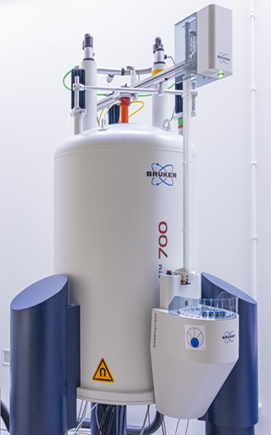
Features & Uses:
• NMR Technique: Studies molecular structure, dynamics, and interactions using magnetic properties of atomic nuclei, commonly hydrogen and carbon.
• Cryoprobe-Enhanced NMR: Utilizes a cryogenically cooled probe (-269°C) to reduce thermal noise, enhancing sensitivity and signal-to-noise ratio.
• Sample Express: Automated handling and analysis of 60 samples sequentially.
• Cryoprobe Components: RF coil and preamplifier, both cryogenically cooled, improving signal detection and spectra quality.
• NMR Characteristics: Non-destructive, high sensitivity, provides detailed structural information.
• Versatility: Analyzes a wide range of samples, from small molecules to large biomolecules, polymers, and more.
• Applications: Investigates dynamic processes, molecular interactions, and diffusion in solution state.
• Quantitative Analysis: Also capable of quantitative analysis.
• Multinuclear/Multidimensional Experiments: Can perform 1D, 2D, and 3D experiments.
For Detailed info: NMR-Instrument Infor...
Make: Perkin Elmer
Model: 2400-II
Feature and uses: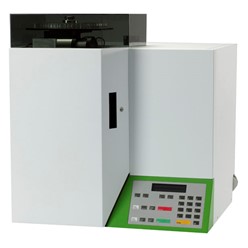
-
CHNS:offers multiple analysis modes: CHN, CHNS, and Oxygen, with easy mode switching, especially with the optional Column Switching Accessory (CSA).
-
CHN Mode: Most widely used; flexible for analyzing various sample types by optimizing combustion parameters. Removes interfering elements like halogens and sulfur before detection.
-
CHNS Mode: Specifically designed for simultaneous determination of carbon, hydrogen, nitrogen, and sulfur in organic materials.
-
Oxygen Mode: Optimized for automatic determination of oxygen in organic materials by pyrolyzing the sample.
-
Operating Gases:
-
In CHN and CHNS modes: Uses oxygen for combustion and either helium or argon as the carrier gas. The use of argon is cost-effective where helium is scarce or expensive.
-
In Oxygen mode: Uses helium with silver vials or a helium/hydrogen mixture with tin vials.
Make: Perkin Elmer
Model: 8000 Dv
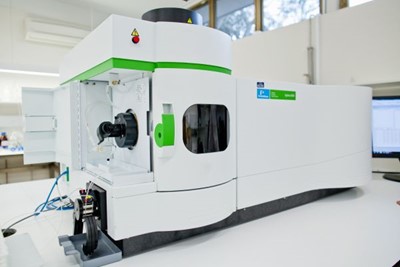 Feature and uses:
Feature and uses:
· ICP-OES System: Designed for precise, reliable elemental analysis with advanced features.
· Double Spectrometer: High-speed, high light-throughput with nitrogen purge for low UV performance.
· Echelle Spectrometer: 0.3 m focal length, 79 lines/mm grating, 165-900 nm range, <0.009 nm resolution.
· Dual Viewing Optics: Axial, radial, or mixed modes with computer-controlled adjustment.
· CCD Detector: Dual backside-illuminated, -8 °C cooling, 176 x 128 pixels, simultaneous background correction.
· Nebulizers: The Optima 8000 can be ordered with a cross-flow or glass concentric nebulizer. The cross-flow design with GemTips™ is corrosion-resistant (sapphire/ruby tips in a PEEK body). The system can routinely handle 50% (v/v) solutions of HCl, HNO3, H2SO4, H3PO4, 20% (v/v) HF and 30% (w/v) NaOH.
· Dynamic Wavelength Stabilization: Real-time correction using a neon spectrum.
· RF Generator: 40 MHz, 750-1500 W, >81% efficiency, <0.1% power stability.
· Automated Control: Computer-controlled plasma ignition, power, and safety interlocks.
· Cooling & Gas: Requires 4 L/min cooling water, computer-controlled argon and shear gas flows.
· Sample Introduction: Demountable torch, adjustable cassette, optional spray chambers, nebulizers.
· Peristaltic Pump: Three-channel, variable speed with FastPump™ and SmartRinse™.
· Power & Dimensions: 200-254 VAC, 20A; 132 x 81 x 76 cm; 132.5 kg.
Make: Bruker
Model: FT-IR Spectrometer ALPHA II Platinum ATR
Feature and uses:
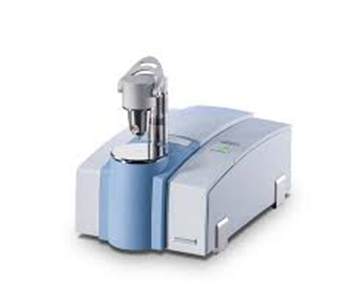
· Polymers: Used for inspecting raw materials, testing finished products, and investigating coated surfaces.
· Industrial Manufacturing & Automotive: Analyzes coatings, used oils, and finished products, both automated and manual.
· Artefacts & Jewellery: Applied in the restoration of historical art and identification/classification of gemstones.
· Pharmaceuticals: Rapidly identifies and qualifies pharmaceutical ingredients.
· Forensic Drug Analysis: Ideal for forensic labs due to ease of use, minimal sample preparation, and ruggedness.
· Food & Beverage: Analyzes wine, must, juices, sugar, alcohol, and detects foreign contaminants.
· Quantifications: Measures water in oil, API concentration, deuterium oxide in H2O, and residual ammonia in flooring.
· Environmental: Analyzes microplastics, soils, and environmental pollutants with specialized accessories.
· CenterGlow™ IR Source: Guarantees high and constant emission.
· Internal Validation Unit: Includes certified reference standard for accuracy.
· RockSolid™ Interferometer: Permanently aligned for stability.
· DTGS Detector: Temperature-stabilized for precise measurements.
· Platinum-ATR: Features a durable monolithic diamond measurement interface.
Make: Metrohm
Model: 850 Professional IC
Features & Uses:
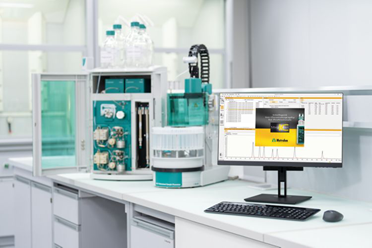
IC Technique :Used for Drinking Water Analysis: Detects and quantifies ionic pollution and other constituents.
-
Aquatic Ecosystems: Analyzes water chemistry to monitor environmental conditions.
-
Food Analysis: Quantifies sugar and salt content in food samples.
-
Protein Isolation: Enables the isolation and analysis of specific proteins.
-
Ion Analysis:
-
Single-charged Ions: Measures ions such as Na+, K+, and Cl−.
-
Double-charged Ions: Analyzes ions like Ca2+ and Mg2+.
-
Polyatomic Inorganic Ions: Identifies ions such as SO4^2− and PO4^3−.
-
Organic Bases: Evaluates molecules with amine functional groups (-NR2H+).
-
Organic Acids: Assesses molecules with carboxylic acid groups (-COO−).
-
Biomolecules: Includes ionized amino acids, peptides, and proteins.
-
850 Professional IC: An ion chromatography (IC) instrument used for separating and analyzing ions in samples.
-
858 Professional Sample Processor: Manages sample processing for IC analysis.
-
Glass Filtration Assembly: Filters samples prior to analysis.
-
Ultraflex, Ultrapure Water System: Provides high-purity water essential for accurate IC analysis.
-
Columns:
-
Anion Analysis: Metrosep Supp 7-250 (61006630) and Metrosep RP Guard (61011030).
-
Cation Analysis: Metrosep C4 (61050420) and Metrosep C4 Guard (61050500).